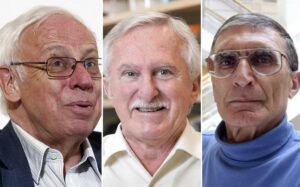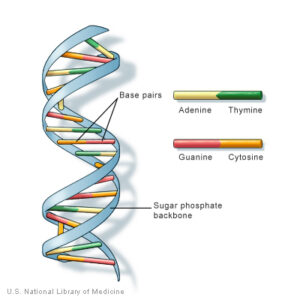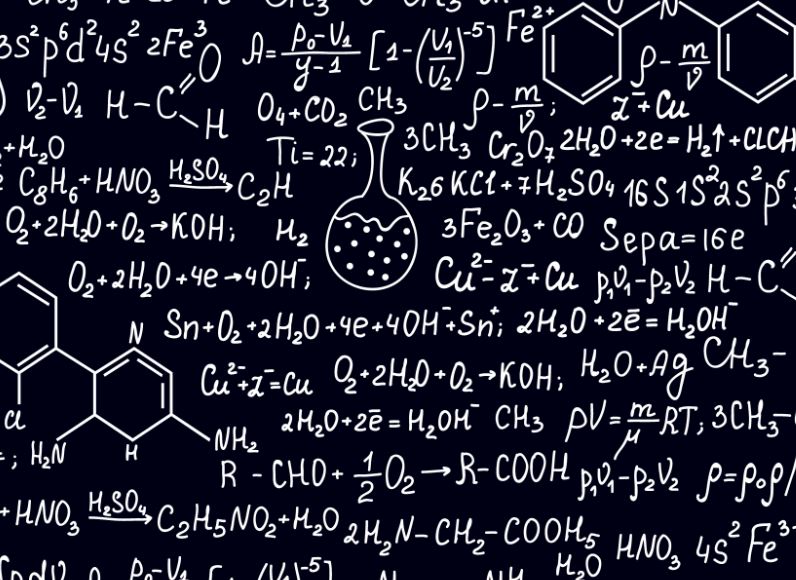The 2015 Nobel Prize for Chemistry has been awarded to Tomas Lindahl, Paul Modrich and Aziz Sancar for their discoveries of how cells repair their own DNA. They are from various countries and cultures but unfortunately there are, again, no women in the list.

Less than a hundred years ago DNA was considered an uninteresting substance. Although it was known to be in all cells it seemed a relatively simple molecule. It was the proteins in their many formulas and structures that were exciting and they were thought they made up the genetic material that determines the shape and characteristics of all organisms. In 1944 Oswald Avery and his colleagues showed that it was, however, DNA that carried the genes. DNA is a very large molecule made up of apparently simple units – a group of atoms joined to a phosphorus atom, a type of sugar called ribose and four, small groups of atoms containing a flat ring called bases. Nine years later Rosalind Franklin, Maurice Wilkins, Francis Crick and James Watson did the work that showed that two sugar-phosphate chains formed a twisting double helix linked by pairs of the bases. Crick and Watson guessed that the order of the bases represented a genetic code. The genes determine the proteins that the cell makes and which carry out all its processes. Over the next ten years the code was unravelled paving the way for reading the whole genome which was accomplished for humans by the year 2000.
The work on DNA suggested that it was like a book made up of chapters and sentences and words. Each word was made up of three of the four letters of the genetic alphabet and represented one of the amino acids used to build proteins. This book was rather like a manuscript written by medieval monks. It could survive for many years in the library. The book was opened frequently to read the long sentences that provided the instructions for building proteins. Occasionally the whole book was copied as cells divided. In sex cells the books was torn apart and half of the pages copied and joined with the half from another sex cell to make an embryo containing a new version of the book. This image suggested that DNA must be very stable. After all many organisms live for years, and some trees survive for thousands of years. Obviously some changes take place; mutations produce new varieties of organisms which evolve into new species. But evolution took millions of years and all organisms from amoebae to zebras share many of the same genes.
It was in the late 1960s that Tomas Lindahl began to question this view. He realised that DNA outside cells is actually not that stable. DNA is damaged by reactants in the air and water, by UV light from the Sun and radiation from radioactive minerals and cosmic rays. Forensic scientists are familiar with this. The longer a body is in the ground the more difficult it is to identify by DNA fingerprinting. It was very lucky that the fifteenth century skeleton found in a Leicester car park had been well preserved so could be identified as King Richard III by DNA matching. The chance of getting complete dinosaur DNA from an 80 million year old piece of amber is so unlikely that it makes Jurassic Park a fantasy rather than just science fiction.

Lindahl estimated that inside cells the DNA must be damaged over one thousand times a day. Even though the whole genome contains billions of bases (letters) this amount of damage would quickly make the book unreadable leading to disease and death of cells. This doesn’t happened so Lindahl reckoned that the cell must be able to repair its own DNA.
Tomas Lindahl was born in Stockholm, Sweden in 1938. He took his PhD and qualified as a medical doctor in 1970 in Stockholm. He then worked in the USA before becoming a Professor at the University of Gothenburg until 1982. Then he moved to the UK to work for the Imperial Cancer Research Fund and became Director of the charity’s Clare Hall research laboratory just north of London. There he found how cells are able to repair damage to individual bases in the DNA chain – a process call base excision repair. Put simply, chemical scissors cut out the damaged base and enzymes insert a replacement.
Aziz Sancar was born in Turkey in 1946 and studied to become a medical doctor. He came top of his year in 1969 but after practising medicine for four years he decided to study biochemistry. He was fascinated to learn that some bacteria damaged by ultra-violet light could repair themselves if blue light was shone on them. Sancar moved to the USA and joined the staff at the University of Texas where he found that these bacteria produced an enzyme that in blue light was able to repair damage to DNA. Later, at Yale University and then as a professor at the University of North Carolina, he worked out the chemical reactions that enabled whole sections of a DNA strand (a nucleotide) damaged by uv light to be removed and replaced. This is called nucleotide excision repair.
Paul Modrich was born in New Mexico, USA also in 1946. He took his first degree at MIT and his PhD at Stanford University in 1973. He then studied at Harvard before making a career at Duke University. As a school boy he had been advised to “learn about this DNA stuff” and that is what he did. He was interested in the errors that can occur when DNA is copied, for example when cells divide. The base on one DNA strand can be matched with an incorrect base on the opposite strand. Modrich found that cells have ways of recognising when these errors occur and over the years he discovered the enzymes that the cell produces to correct this in a process called mismatch repair.
All three of the Nobel laureates made their discoveries in work on bacteria but then investigated the same repair processes in human cells. At the molecular level within cells these repair processes involve the same type of chemical reactions we are familiar with in school chemistry – acid/base, redox, bond formation and breaking, etc. Occasionally the repair systems fail and can result in cancers or mutations that produce genetic diseases in embryos.
Tomas Lindahl retired as Director of Clare Hall in 2005 and closed his laboratory in 2009. By then the Imperial Cancer Research Fund had joined up with the Cancer Research Campaign to form Cancer Research UK. This depended on public donations to fund the research of Lindahl and others that leads to understanding of the causes and cures of cancer. This year Cancer Research UK became part of the Francis Crick Institute and Lindahl remains an emeritus research associate. In 2016 the work done at Clare Hall will transfer to the new Francis Crick building at St Pancras in London. Perhaps in years to come more Nobel prizes will be won by the Francis Crick researchers and hopefully women will receive their fair share.
Activities
1 Since 1901 there have been 169 awards of the Nobel Prize for Chemistry.
(a) Who was the first winner of the Chemistry Prize?
(b) Who won the Chemistry prize twice?
(c) Who are the four women to have won the Chemistry prize?
(d) In its early days the prize was usually awarded to one person, now it is usually divided between the maximum number of three laureates. Why do you think this change taken place?
2 Find out more about the lives of the three 2015 winners – Tomas Lindahl, Aziz Sancar and Paul Modrich.
3 Why was it thought that DNA was a stable substance?
4 What value do you think Lindahl’s, Sancar’s and Modrich’s work has for people worldwide?
5 Tomas Lindahl’s research was funded by a charity. Find out about the work done by Cancer Research UK and how it raises money for research.
6 Cancer Research UK is now a member of the Francis Crick Institute.
(a) Find out more about the Institute such as the other members, its new building and the work it plans to do.
(b) Why has it been named after Francis Crick?
(c) Which of the Research Directors at the Institute is also a Nobel Prize winner?
Bibliography
http://www.nobelprize.org/nobel_prizes/chemistry/
Information about the Nobel Prize for Chemistry and in particular the 2015 recipients
http://crick.ac.uk/
The website of the Francis Crick Institute
Oxford Dictionary of Scientists, pub. OUP 1999



